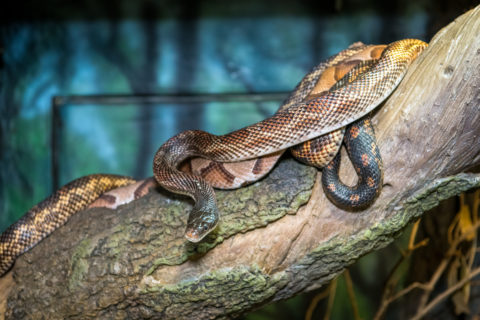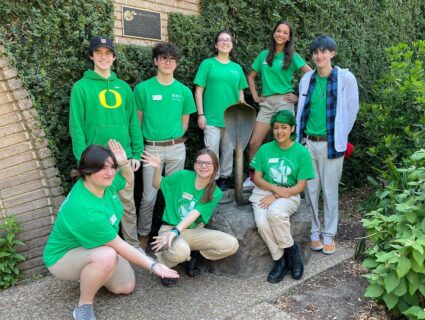Fact or Fiction – World Snake Day
 This World Snake Day, we’re committed to clearing up those myths you may have heard about snakes and helping to save snakes locally through positive opportunities to learn about and see snake species that call Texas home. One such opportunity is the Zoo Crew Snake Saving Campaign. The Campaign is a teen-led conservation project committed to understanding how Texans perceive snakes and what experiences and knowledge influence those perceptions. The goal of the campaign is to improve human-snake interactions and educate fellow Texans about the important role snakes play in the ecosystem.
This World Snake Day, we’re committed to clearing up those myths you may have heard about snakes and helping to save snakes locally through positive opportunities to learn about and see snake species that call Texas home. One such opportunity is the Zoo Crew Snake Saving Campaign. The Campaign is a teen-led conservation project committed to understanding how Texans perceive snakes and what experiences and knowledge influence those perceptions. The goal of the campaign is to improve human-snake interactions and educate fellow Texans about the important role snakes play in the ecosystem.

Snakes often get a bad rap, with lots of folklore and mystery surrounding their natural history and biology. Through work being done by the Snake Saving Campaign and our conservation partners, the Houston Zoo is helping to dispel some of the many myths that exist about snakes and help spread the word about how important these animals really are. It’s time for a little game!
Fact or Fiction
Snakes are naturally aggressive and will chase after you.
- Fiction! There are many old stories about being chased by snakes. But scientists who study reptiles don’t have this experience – they find that snakes are always trying to escape. A snake has nothing to gain by chasing a person. It obviously cannot eat a person and would actually be putting itself in more danger.
I have a pet snake that I can’t keep anymore; it will be ok to let it go in a natural place.
- Fiction! Never release ANY pet into the wild. It’s not good for the animal or our environment. Instead, try returning it to the pet store, finding a new pet owner, or contacting your local wildlife agency, animal control, or reptile rescue group. Click here for more information.
Kingsnakes will eat other snakes.
- Fact! Eastern Kingsnakes are known to eat rodents, frogs, lizards, small turtles, and snakes; including venomous species like rattlesnakes and copperheads. There are actually quite a few species of snakes that will eat other snakes.
Sprinkling sulfur or other store bought chemicals will keep snakes out of your yard.
- Fiction! There is no evidence to suggest that these chemicals deter snakes. However, if you remove snake habitat and food from your yard, they won’t be willing to stay. Remove brush piles, logs, and leaflitter; keep bushes trimmed back and grass cut short. Keep mice out of stored birdseed or grain.
Snakes prevent human exposure to disease carriers.
- Fact! Snakes are vital to a healthy ecosystem and act as nature’s pest control. They can keep pests such as rats and mice in check. Small rodents like these can be vectors for various pathogens harmful to human health and the likelihood of outbreak increases when rodent populations increase. Snakes prey on many of these animals and help keep outbreaks at bay.
All water snakes are venomous.
- Fiction! Cottonmouths are the only venomous semi-aquatic snake in North America. All true water snakes (there are four species in North America), and other aquatic snake species are non-venomous.
Snakes can hypnotize birds and other prey.
- Fiction! Snakes have no eyelids, and they never blink but they don’t have any type of hypnotic powers. Some species may move their head from side to side to gain depth perception while hunting. Maybe that is where this myth got started.

Stop by the Reptile & Amphibian House during your next Zoo visit to see some of our snake friends. Open daily from 9:30 a.m. to 5:00 p.m.
